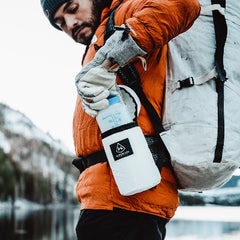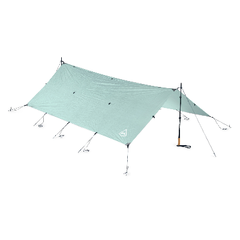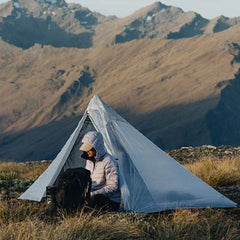
Simplifying can be Scary, but the Rewards are Great, from our Stripped Down series.
Photos and text by KT Miller
It all started after I spent a week skiing with Beau Fredlund outside Cooke City. More literally I followed him around, unsuccessfully trying to keep up. I didn’t know it back then, but that was the beginning of my transformation—a transition from being a passionate backcountry skier to an athlete. At 23, I finally started settling into my body and honing my physical stamina. I also learned, finally, to use efficiency as a tool to compensate for being small.
I had a Hyperlite Mountain Gear Ice Pack that I had been using for climbing and absolutely loved, but for some reason I hadn’t even considered using it for backcountry skiing. Instead I used an old go-to pack that had a rear entry zipper I used to access my camera, a separate pocket for my rescue gear (shovel, probe, snow saw), a goggle pocket, a helmet pocket and more. It seemed perfect, but it weighed just under 4 lbs empty. After a few weeks of skiing Beau noticed I had an Ice Pack. He had been a Hyperlite Mountain Gear fan and user for years. He picked it up and then picked up my other ski pack. “Why aren’t you using this one?” He asked holding the Ice Pack a little higher.

“It doesn’t fit my ski gear well. There’s no where to put my shovel and probe, and I can’t access my camera easily…” I responded.
“Ah, the potato-sack effect,” he remarked. “You should try it tomorrow!” Beau proceeded to make me empty the two packs and hold them side-by-side. The Hyperlite Mountain Gear pack was half the weight, at least. “Just use stuff sacks.” Beau said.
I sat with my gear laid out on the living-room floor. I still wasn’t convinced, but I figured every ounce helped when I was trying to keep up with Beau, and he was using a white pack, so I should at least give it a try.

The next morning I used my shovel blade to cradle my water bottle, thermos, gloves, goggles and buff in the bottom of my Ice Pack. I slid my shovel handle and probe in against the back panel and layered the rest of my things on top. I used one stuff sack to contain my snacks and another for my first aid kit. Everything settled into place and the pack didn’t become the chaotic empty void I thought it might. In fact in some ways it was organized better. Things I needed early in the day were on were on top. My warm layers were on the bottom, and I didn’t have to mess with any zippers. I wore my camera outside over my shoulder most of the time, tucking it in my pack only when I knew I wasn’t going to use it for a while. Consequently I took more pictures. I lightened my load. It was awesome. I didn’t sweat or breath as heavily or breathe as hard. It made skinning easier and more fun. That evening I trimmed down my kit even more. Do I really need two pairs of extra gloves? No. One is plenty. I’m always coming home with almost a full liter of water. Do I really need to carry two? Maybe not. What about my layers? What needs to stay and what can go?
That day really changed my philosophy about stuff, and I have since honed it into more of an art. It’s about carrying what you need, but absolutely nothing more. Because the lighter your load is, the more you are able to free your mind and enjoy what you are doing. There’s nothing worse than going on a hike and thinking about when you get to take off your pack the whole time.
Since that day skiing I have used my lightweight pack for everything, and I applied what I learned about skiing to backpacking, hiking, trail running, fishing, you name it. It all works the same way. Less is always more.
Our culture breeds the false dichotomy that we need things to be happy, that we need stuff to feel good. We are often uncomfortable when we lack creature comforts. But the reality is that the greatest happiness in life comes from our memories and experiences; it comes from the unforgettable vistas from mountain summits, laughter around a campfire, stillness on a float down a river and the smile of a friend who is along for the ride. That’s what it’s really about in the end. To go light is to live more simply, to live with less, and as a result, be able to experience more.
The post Live With Less; Experience More appeared first on Hyperlite Mountain Gear Blog.

















